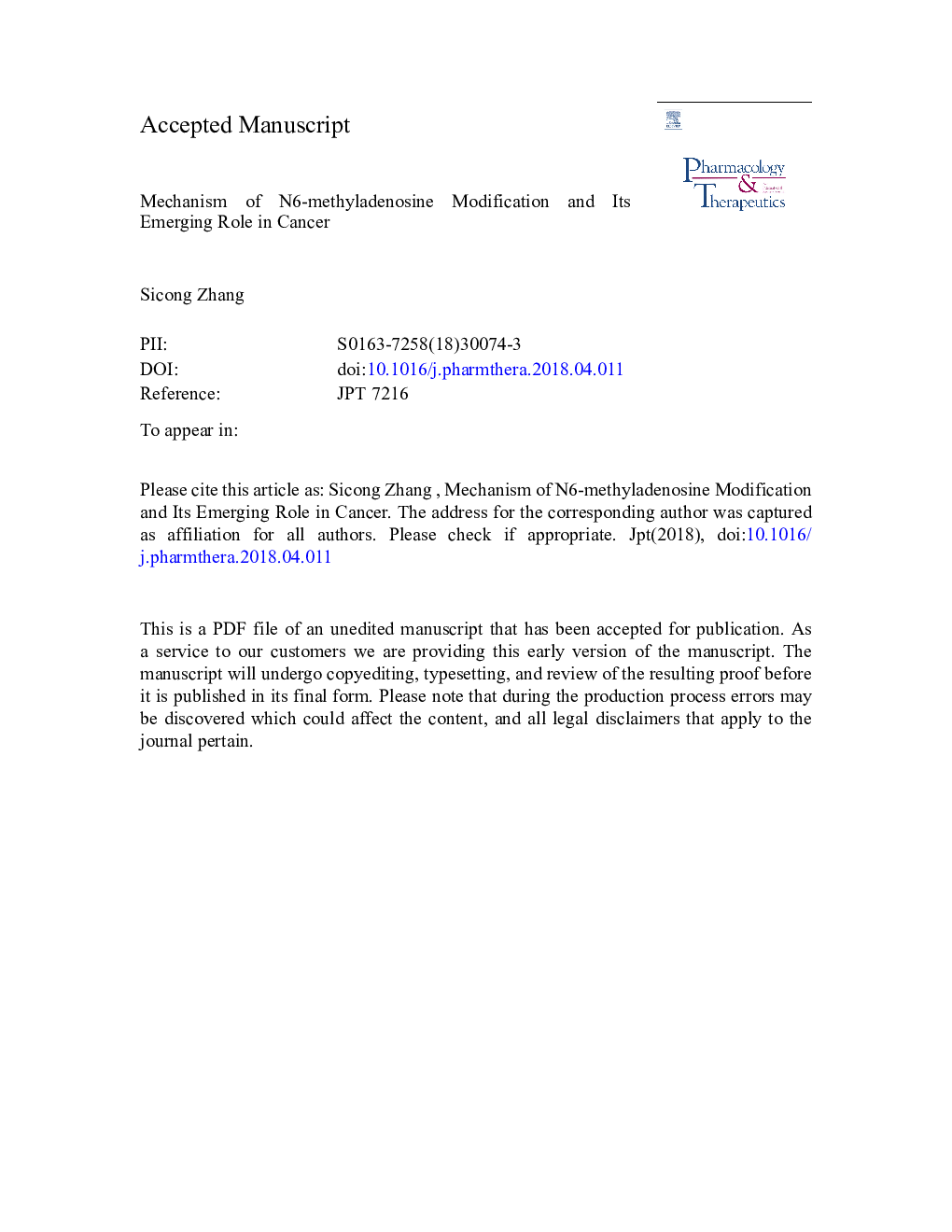| Article ID | Journal | Published Year | Pages | File Type |
|---|---|---|---|---|
| 8536776 | Pharmacology & Therapeutics | 2018 | 44 Pages |
Abstract
N6-methyladenosine (m6A), the most prevalent internal methylation in messenger RNA (mRNA) that is deposited by m6A methyltransferases, removed by m6A demethylases and recognized by different RNA-binding proteins, distinguishes the transcripts through multilayer interactions with mRNA processing, export, degradation and translation machineries. m6A plays an important role in regulation of gene expression for fundamental cellular processes and diverse physiological functions. Aberrant m6A decorations lead to cancer but also have the potential to yield new therapies. This review outlines the evolution of the m6A field, formation of key concepts, important open questions and also discusses the molecular basis of mRNA m6A modification and its effect in cancer, highlighting the potential of demethylase as a therapeutic target for cancer treatment.
Keywords
METTL3ALKBH5DemethylaseFOXM1NANOGHSPCIDH1/2SRSF3N6-methyladenosineIGF2BPADAReIF3RNAP IIRetinoic acid receptor alphaAMLMETTL14EpitranscriptomicsNanog homeoboxMETTL16YTHDF2SMCSAMα-KGGBMMYCRBPG3BP1GSCRNA polymerase II2-Hydroxyglutaratem6Aα-ketoglutarateS-adenosylmethionineMeclofenamic acidcoding sequencesforkhead box M1ESCFTOCancerHematopoietic stem/progenitor cellglioma stem cellEmbryonic stem cellEukaryotic initiation factor 3acute myeloid leukemiaMethyltransferaseUTR یا untranslated regions untranslated regionRaraRNA-binding proteinCdSClipGlioblastoma multiforme
Related Topics
Health Sciences
Pharmacology, Toxicology and Pharmaceutical Science
Pharmacology
Authors
Sicong Zhang,
